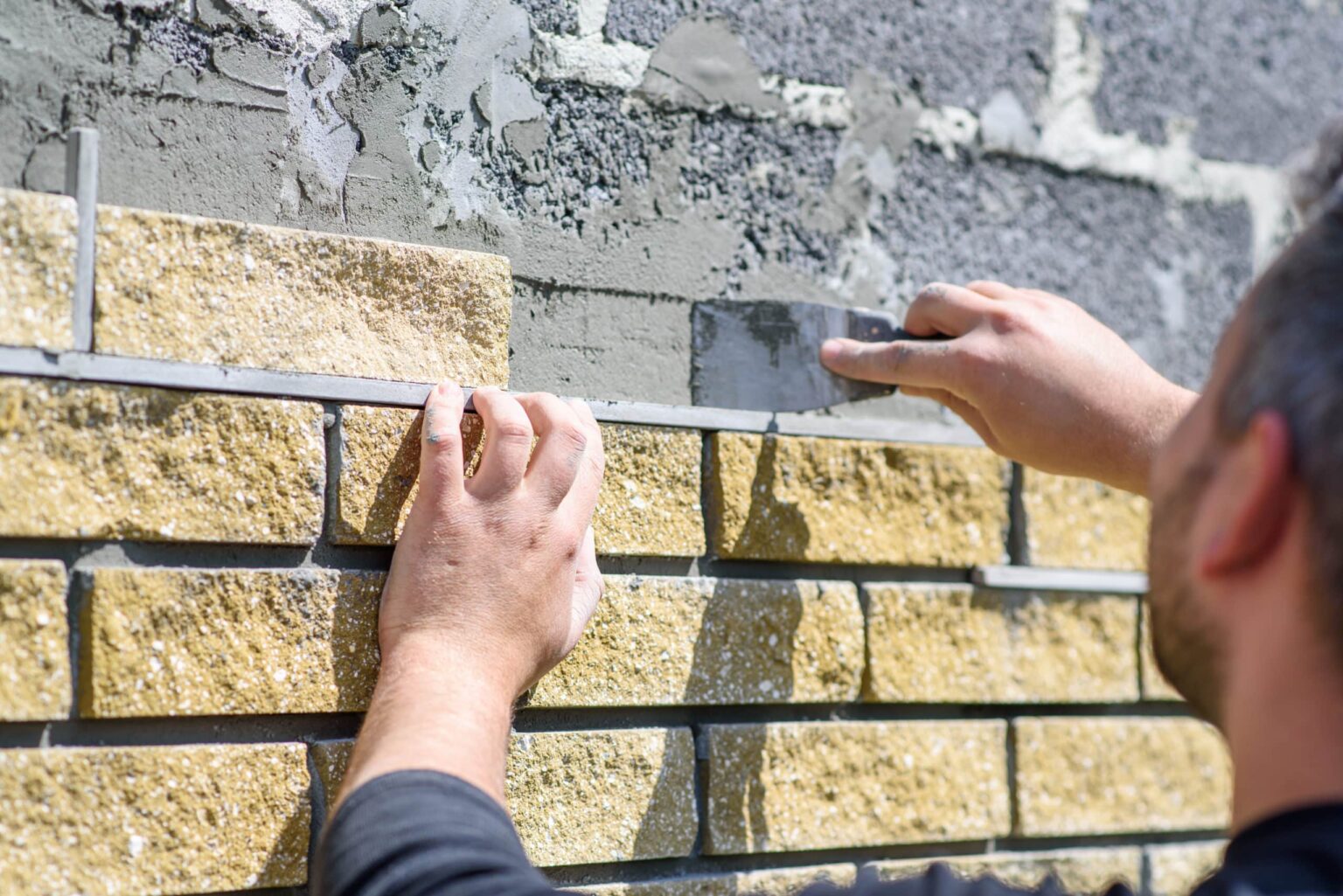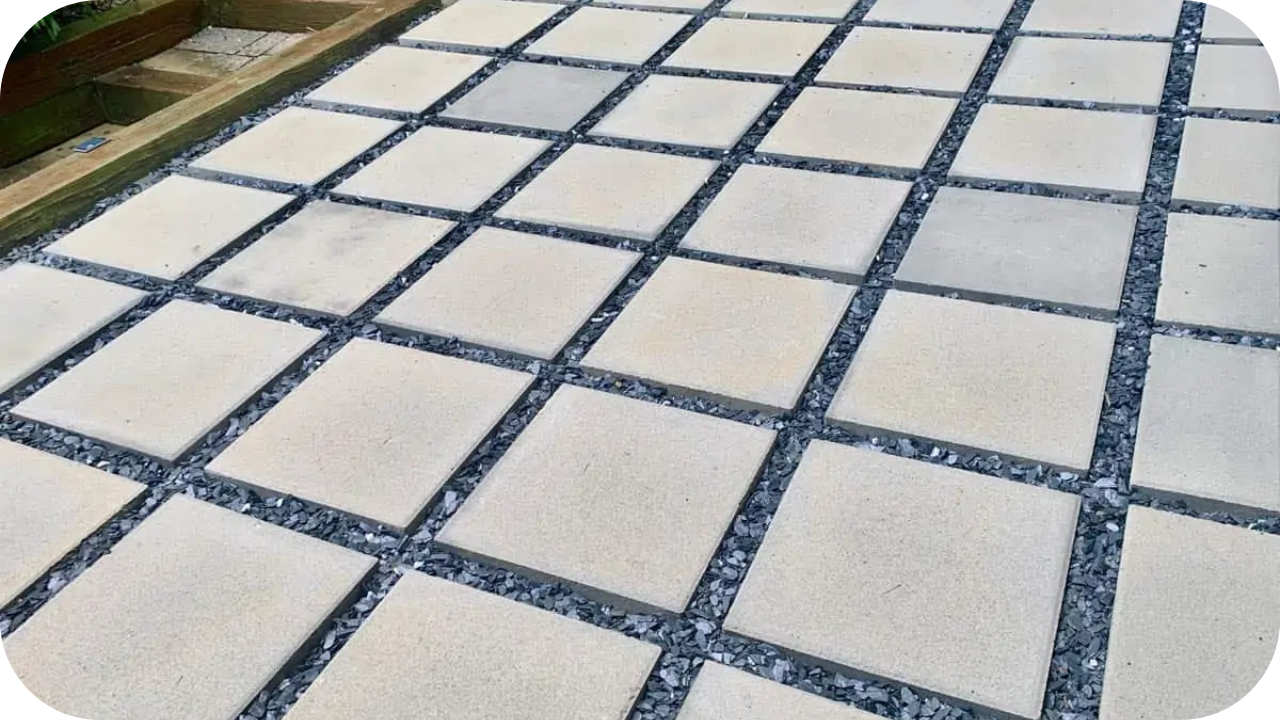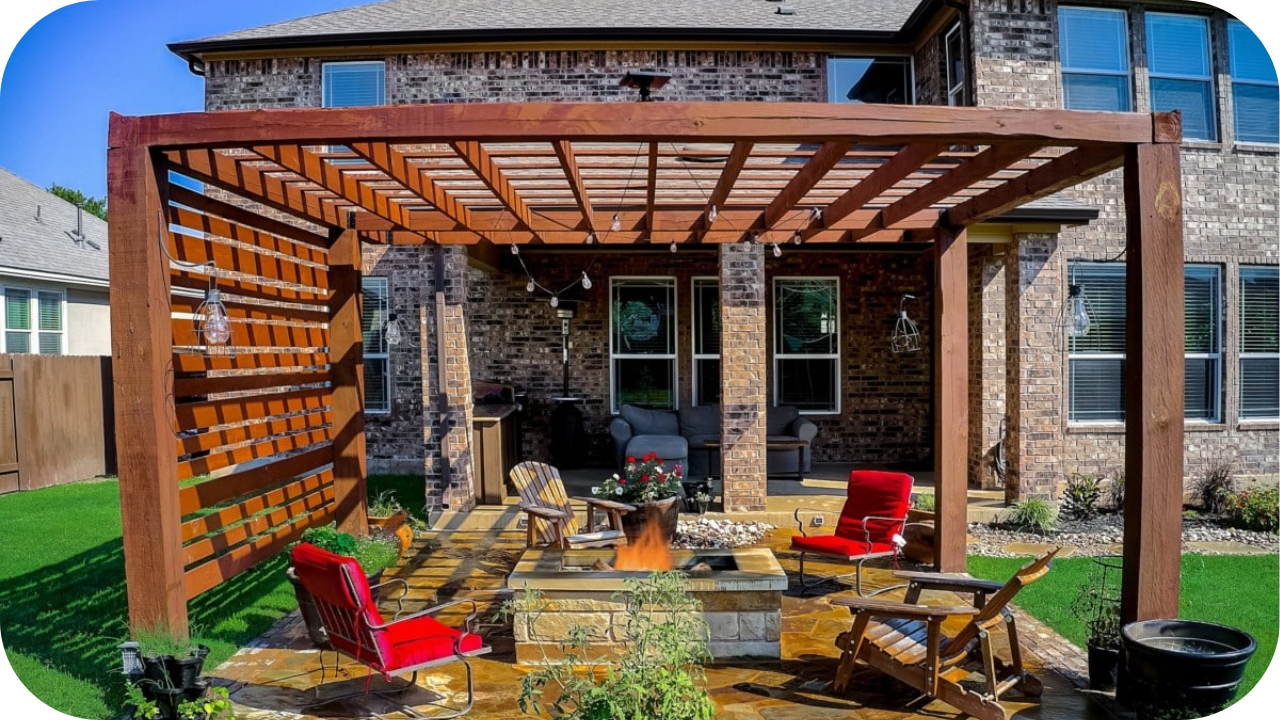
Many homeowners and builders struggle to find a solution that enhances their buildings’ aesthetic appeal while providing durability and protection.
Without the right materials, buildings can face weather damage, poor insulation, and high maintenance costs, leading to frustration and increased expenses.
Wall cladding effectively addresses these challenges, combining beauty, strength, and practicality. Choosing the right cladding material can transform any structure, ensuring long-lasting protection and a stunning finish.
What is Wall Cladding?
Wall cladding is a protective and decorative layer applied to a building’s exterior or interior walls. It enhances aesthetics, provides insulation, and shields against weather elements. Common materials include natural stone, wood, brick, metal, vinyl, and composites, each offering unique durability, appearance, and maintenance benefits.
Wall cladding is layering one material over the exterior or interior walls to provide protection and aesthetic appeal. It protects against environmental elements such as rain, wind, and temperature variations, enhancing the structure’s durability. Cladding can improve insulation, reduce maintenance requirements, and increase energy efficiency.
Natural stone, wood, brick, metal, vinyl, and composite materials are commonly used for wall cladding. Each offers unique benefits. Natural stone provides a timeless, elegant look and exceptional durability, while metal cladding is known for its modern aesthetic and resistance to harsh weather conditions. Wood cladding brings warmth and natural beauty, though it may require more maintenance than other materials.
The wall cladding installation involves fixing panels or boards to the wall substrate, often using a framework or adhesive. Proper installation is crucial to ensure long-term performance and to prevent issues such as moisture ingress. Wall cladding transforms a building’s appearance and adds a layer of functionality, making it an essential consideration for new constructions and renovations.
Types of Wall Cladding

Wall cladding is a versatile architectural element that can significantly enhance a building’s aesthetics and functionality. Various types of wall cladding cater to different design preferences and practical needs:
1. Brick Cladding
Renowned for its durability and timeless appeal, brick cladding provides a classic look and excellent thermal insulation. It’s made from fired clay and comes in various colours, textures, and sizes. Brick cladding is ideal for traditional and contemporary designs and offers high resistance to fire and weather conditions. However, installation can be relatively expensive and requires skilled labour.
2. Stone Cladding
Available in natural or manufactured options, stone cladding adds a touch of elegance and strength. Natural stone, such as granite, limestone, or slate, offers unique patterns and textures, making each installation one-of-a-kind. Manufactured stone is a more cost-effective alternative that mimics the appearance of natural stone. Stone cladding is perfect for creating a rustic or luxurious facade and is highly durable, although it can be heavy and may need additional structural support.
3. Timber Cladding
Favoured for its natural warmth and beauty, timber cladding is eco-friendly and offers a range of finishes, from untreated natural wood to painted or stained options. Commonly used woods include cedar, larch, and oak. Timber cladding provides good insulation and breathability but requires regular maintenance to prevent weather damage and rot. It’s also susceptible to pests unless treated properly.
4. Metal Cladding
Popular in modern architecture, metal cladding, including aluminium and steel, offers sleek, clean lines and exceptional durability. It is available in various finishes, such as brushed, polished, or coated with protective layers to prevent corrosion. Metal cladding is resistant to fire, pests, and harsh weather conditions. However, it can be prone to dents and requires proper insulation to prevent thermal bridging.
5. Vinyl Cladding
An economical and low-maintenance option, vinyl cladding is available in various colours and styles, including those that mimic wood grain. It is lightweight, easy to install, and moisture-resistant, making it ideal for regions with high humidity. Vinyl cladding is also resistant to fading, peeling, and insects. However, it is less durable than other cladding materials and can crack in extreme temperatures.
6. Fibre Cement Cladding
Fibre cement cladding combines the benefits of masonry and wood. It is made from cement, sand, and cellulose fibres. It is durable, fire-resistant, and requires minimal upkeep. Fibre cement cladding has various textures and finishes, including smooth, wood grain, and stone effects. It offers excellent resistance to rot, pests, and weathering, making it a versatile choice for various climates. However, it can be heavy and may require professional installation.
Materials Used in Wall Cladding

Wall cladding materials play a crucial role in defining the aesthetic appeal, durability, and functionality of a building. Here’s an overview of the most commonly used materials:
- Brick: A traditional choice, brick is valued for its durability, fire resistance, and thermal insulation properties. It provides a classic and timeless look that suits traditional and modern architectural styles.
- Stone: Natural stones such as granite, limestone, and slate offer unparalleled beauty and strength. They are also highly durable and weather-resistant, making them ideal for creating a luxurious and enduring facade.
- Timber: Timber cladding is appreciated for its natural warmth and eco-friendliness. Woods like cedar, larch, and oak offer excellent insulation and aesthetic appeal but require regular maintenance to prevent weather damage and decay.
- Metal: Metals like aluminium and steel are popular for their sleek appearance and robustness. They are resistant to fire, pests, and harsh weather, although they can be prone to denting and require proper insulation.
- Vinyl: Vinyl cladding is a cost-effective and low-maintenance option. It is available in various colours and styles, provides moisture resistance, and is easy to install, though it may be less durable in extreme conditions.
- Fibre Cement: Combining cement, sand, and cellulose fibres, fibre cement cladding offers durability, fire resistance, and minimal maintenance. It mimics the appearance of wood and stone, making it versatile for different design needs.
Installation Process

Installing wall cladding is a meticulous process that requires precision and attention to detail. Here’s a step-by-step guide to ensure a flawless installation:
- Preparation: Assess the wall surface for structural issues, ensuring it is clean, dry, and level. Measure the area accurately to determine the amount of cladding material needed.
- Framework Installation: A framework of battens must be installed for most cladding types, especially timber and fibre cement. This provides a solid foundation and allows for ventilation behind the cladding, preventing moisture build-up and ensuring longevity.
- Weatherproofing: Apply a weatherproof membrane or vapour barrier over the wall to protect against moisture ingress. This step is crucial in maintaining the integrity of the cladding and the wall structure.
- Cladding Installation: Starting from the bottom, securely fix the cladding panels or boards to the framework using appropriate fasteners such as screws or nails. Ensure each piece is level and overlaps or interlocks properly to prevent water penetration.
- Finishing Touches: Trim any excess material and install corner pieces, edge trims, and flashing to seal gaps and provide a polished finish. Inspect the entire installation for any gaps or loose elements.
- Maintenance: Depending on the material, apply treatments such as sealants, paint, or stains to enhance durability and aesthetic appeal.
Advantages of Wall Cladding

Wall cladding offers numerous benefits, making it an essential element in modern construction and design. Here are the key advantages:
1. Aesthetic Enhancement
Wall cladding transforms a building’s appearance, offering various styles, colours, and textures to suit any architectural design. Whether you’re aiming for a rustic, traditional look with stone or a sleek, modern facade with metal, cladding adds visual interest and significantly boosts the property’s curb appeal. The variety of options available ensures that every homeowner can find a cladding style that enhances the overall aesthetic of their building.
2. Protection and Durability
Cladding protects the building’s structure against harsh weather conditions, UV radiation, and environmental pollutants. It also helps prevent damage from moisture, which can lead to rot and mould, extending the building’s lifespan. Materials like brick, stone, and fibre cement are particularly durable, offering minimal wear and tear and long-lasting protection.
3. Thermal Insulation
Many cladding materials, such as brick and fibre cement, provide excellent thermal insulation. This helps maintain a comfortable indoor temperature by reducing heat loss in the winter and keeping interiors cool in the summer. Improved insulation means less reliance on heating and cooling systems, significantly lowering energy costs and contributing to a more sustainable, energy-efficient home.
4. Low Maintenance
High-quality cladding materials require minimal upkeep compared to traditional wall finishes. Materials like vinyl and metal are particularly low-maintenance and resistant to fading, peeling, and insect damage. Once installed, these cladding options will retain their appearance and functionality with very little effort, saving homeowners time and money on repairs and maintenance.
4. Acoustic Insulation
Cladding can also improve a building’s acoustic performance by reducing external noise infiltration. This is especially beneficial for homes in busy urban areas or near highways. Improved acoustic insulation creates a quieter and more comfortable indoor environment, enhancing the overall quality of life for the occupants.
5. Increased Property Value
Wall cladding can significantly increase a property’s value by enhancing aesthetics, protection, and energy efficiency. It’s an attractive feature for potential buyers, offering immediate visual appeal and long-term benefits. Quality cladding can provide a good return on investment, making it a smart choice for homeowners looking to sell or simply improve their property’s market value.
Disadvantages of Wall Cladding

While wall cladding offers many benefits, it’s important to consider the potential drawbacks to make an informed decision. Here are the key disadvantages:
1. Cost
High-quality cladding materials, such as natural stone or metal, can be expensive. The cost of materials and professional installation can significantly increase the overall project budget, which can be a major consideration for homeowners working with limited funds. Additionally, maintenance costs over time can add to the overall expense, particularly for materials that require regular upkeep.
2. Maintenance Requirements
Some cladding materials, like timber, require regular maintenance to preserve their appearance and prevent damage. This includes tasks such as painting, staining, or sealing, which can be time-consuming and costly. Timber, for example, is prone to weathering and insect damage if not properly maintained. Regular maintenance ensures longevity and aesthetic appeal, adding to the long-term costs and effort required.
3. Installation Challenges
The installation process for certain cladding types can be complex and may require skilled labour. Improper installation can lead to significant issues, such as water infiltration, reduced insulation effectiveness, and structural problems. For instance, stone or brick cladding must be installed to ensure proper alignment and secure attachment to the building’s framework. This complexity can increase labour costs and extend the construction timeline.
4. Weight
Heavy cladding materials like natural stone and brick require additional structural support. This can complicate the design and construction process, adding to the project’s overall complexity and cost. Some buildings may be unsuitable for heavy cladding due to weight limitations, necessitating structural reinforcements that can further increase expenses and construction time.
5. Environmental Impact
Some cladding materials, particularly those involving synthetic or non-renewable resources, can have a negative environmental impact. Producing these materials often involves significant energy consumption and emissions, contributing to a higher carbon footprint. Additionally, transporting heavy materials like stone or brick can further increase environmental impact due to fuel consumption and emissions associated with long-distance shipping.
6. Limited Recyclability
Certain cladding materials, especially those composed of composites or synthetics, may have limited recyclability. This can pose challenges for sustainable building practices and end-of-life disposal. Materials that cannot be easily recycled contribute to landfill waste, posing environmental concerns. Selecting cladding materials with better recyclability or considering their entire lifecycle is crucial for sustainable construction practices.
Popular Wall Cladding Trends
Wall cladding trends continuously evolve, reflecting materials advancements and shifting design preferences. Here are some of the most popular wall cladding trends currently shaping the industry:
1. Mixed Materials
Combining different cladding materials like wood, metal, stone, and glass creates a dynamic and visually appealing facade. This trend allows for greater creativity and personalised design, enabling architects and homeowners to play with textures, colours, and forms. The juxtaposition of materials can highlight architectural features and create a unique, customised look that stands out from conventional designs.
2. Sustainable Materials
With a growing emphasis on eco-friendly construction, sustainable cladding materials like reclaimed wood, recycled metal, and fibre cement are in high demand. These materials offer environmental benefits, such as reduced resource consumption and lower carbon footprints, while maintaining aesthetic appeal. Sustainable cladding supports green building practices and often qualifies for certifications like LEED, enhancing the building’s marketability and compliance with modern environmental standards.
3. Natural Finishes
A rising preference for natural, raw finishes highlights the inherent beauty of stone, timber, and brick materials. This trend embraces a more organic and earthy aesthetic, creating a warm and inviting exterior. Natural finishes celebrate the unique textures and variations in raw materials, fostering a closer connection to nature and providing a timeless, authentic appearance that ages gracefully over time.
4. Large Format Panels
Large-format cladding panels are gaining popularity for their sleek, modern appearance and ability to create seamless surfaces. Contemporary designs often use them to achieve a minimalist and elegant look. These panels reduce the number of joints and seams, resulting in a clean and uninterrupted facade. They can be made from porcelain, metal, and composite materials, offering aesthetic and practical benefits, including ease of maintenance and installation.
5. Textured Surfaces
Textured cladding, including patterns, grooves, and embossed designs, adds depth and interest to a building’s exterior. This trend enhances visual appeal and can create striking focal points. Textured surfaces can be achieved with various materials, including metal, stone, and fibre cement, offering endless possibilities for creative expression. They can also play with light and shadow, adding a dynamic element to the building’s appearance.
6. Bold Colours
Vibrant and bold colour choices in cladding make a statement in modern architecture. Bright hues and contrasting colours create eye-catching facades in urban landscapes. This trend allows for individual expression and can be used to highlight specific architectural features or create a distinctive brand identity for commercial buildings. Bold colours can transform the exterior of a building, making it memorable and visually stimulating.
Choosing the Right Wall Cladding for Your Home

Selecting the appropriate wall cladding for your home is a crucial decision that impacts aesthetics and functionality. Here’s how to make an informed choice:
- Consider the Climate: The local climate plays a significant role in determining the best cladding material. For instance, timber may not be ideal for humid regions due to its susceptibility to moisture, while metal cladding can withstand harsh weather conditions.
- Assess Maintenance Needs: Different materials require varying levels of maintenance. Timber and natural stone need regular upkeep to maintain their appearance, while materials like vinyl and fibre cement are low-maintenance, making them ideal for busy homeowners.
- Evaluate Aesthetic Appeal: Cladding has a substantial visual impact on your home’s exterior. Choose materials and finishes that complement your home’s architectural style and enhance its curb appeal. Modern designs often favour sleek metal or large-format panels, while traditional homes may benefit from the classic look of brick or stone.
- Budget Considerations: Cladding materials vary widely in cost. Establish a budget and explore options within that range, balancing initial expenses with long-term benefits like durability and energy efficiency.
- Insulation Properties: Good insulation is essential for energy efficiency and comfort. Materials like brick and fibre cement offer excellent thermal insulation, reducing heating and cooling costs.
- Environmental Impact: Sustainable and eco-friendly materials are increasingly popular. Consider reclaimed wood, recycled metal, or eco-friendly composites to minimise your environmental footprint.
Conclusion
Wall cladding is vital in modern construction, offering aesthetic, protective, and insulating benefits.
Consult with a professional today to explore the best cladding options for your home. Transform your property’s exterior with style and functionality. Make the right choice for a durable and beautiful facade.
More To Explore

Top Outdoor Paving Ideas for Aussie Backyards
Are you ready to transform your Aussie backyard with stunning paving ideas? Whether you’re looking to create a stylish outdoor entertaining area, a functional pathway,

Small Backyard? Here’s How to Maximise with Stone
Struggling to make the most of your small backyard space? Many homeowners with limited outdoor areas feel restricted when it comes to design. But what


